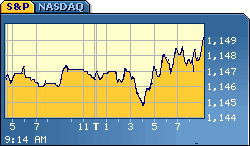It is LTCM all over again, only this time its bigger. The credit default swap market has mushroomed from $700 billion in 2000 to $45.5 trillion in 2007. This is truly a staggering number and more than half the size of the entire asset base of the global banking system. The opinion of how much money is actual at risk differs depending on the person or institution asked. The International Swaps and Derivatives Association (ISDA) estimates that the net exposure of the $50 trillion global derivatives market is likely under $1 trillion. Assuming 2.0 percent of that debt defaults, and that the debt recovers 25 percent of its principal, protection sellers would likely face losses of around $15 billion.
Bill Gross, manager of the world's largest bond fund begs to differ. In his January 2008 Investment Outlook he writes:
While the exact amount of reserves supporting the Bank of Shadows is undeterminable, let’s go back to the $45 trillion BIS estimate of outstanding CDS for more insight. If total investment grade and junk bond defaults approach historical norms of 1¼% in 2008 (Moody’s and S&P forecast something close) then $500 billion of these default contracts will be triggered resulting in losses of $250 billion or more to the "protection selling" party once recoveries are inserted into the equation.
The difference of opinion centers around the actual money at risk of default. ISDA's estimate of only $15 billion in losses seems to be unrealistic given the current market dislocation. It is obviously the job of the dealer to balance CDS contracts on both sides of the counterparties to minimize risks. Market dislocation, such as fewer investors considering selling protection, is making this job more difficult.
Bill Gross also points out, as equity and subordinated tranches comprising 10 or 20% of the repackaged loans shrink due to underlying defaults, the "pyramid begins to unravel". The problem is the lack of a reserve cushion within this pyramid scheme:
Credit default swaps (CDS) are perhaps the most egregious offenders. While margin does flow periodically to balance both party’s accounts, the conduits that hold CDS contracts are in effect non-regulated banks, much like their hedge fund brethren, with no requirements to hold reserves against a significant "black swan" run that might break them.
The important question for investors is: What is to come out if this "pyramid scheme" collapses? Bill Gross also has an answer ready.
Financial innovation will inevitably march forward, if not in distinctly new forms, then into new asset markets and even unexplored continents. For now, however, its current surge is spent. Investment survivors will have to learn to live in a different world, filled with new risks, lower leverage, and at some point, hopefully greater rewards.
Recent assertions coming from the International Monetary Fund that bank write offs will likely amount to $1 trillion is better understandable in the light of a continued meltdown in derivatives. In this uncertain and scary times "the air of suspicion is so deep-rooted given the opacity regarding the size and leverage, type and quality of the structured products that were developed since 2004, that it is causing funds to fail and financial institutions to be bailed out," an analyst wrote in a note to clients.
source: Pyramids Crumbling
Investment Outlook
Bill Gross | January 2008
http://www.pimco.com/LeftNav/Featured+Market+Commentary/IO/2008/IO+January+2008.htm
source: Credit protection sellers may lose $15 bln-ISDA
Reuters
http://www.reuters.com/article/companyNews/idUSN2245675820080122
Tuesday, April 15, 2008
Its LTCM just bigger
Posted by
Fred
at
3:10 PM
![]()
Subscribe to:
Post Comments (Atom)



2 comments:
You have very interesting Blog. Do you have any other information about Citco and GlobeOp?
Which one is superior in th elevel of service being provided?
I have also found interesting sites that you may be interested to checkout more information about Hedge Funds:
Hedge Fund History
Hedge Fund Administration
Hedge Fund Legal Structure
Regards,
Hi,
You can learn a lot about GlobeOp by studying the people that work for the company. LinkedIn employee profiles of GlobeOp will tell you the full story.
Post a Comment